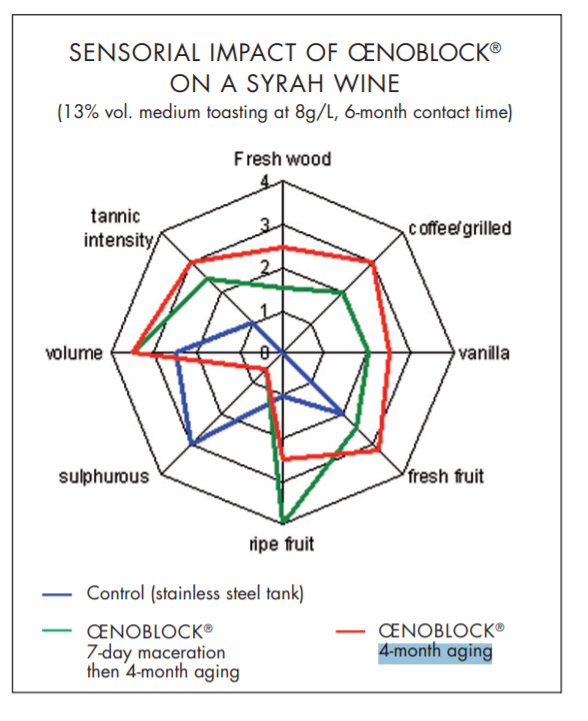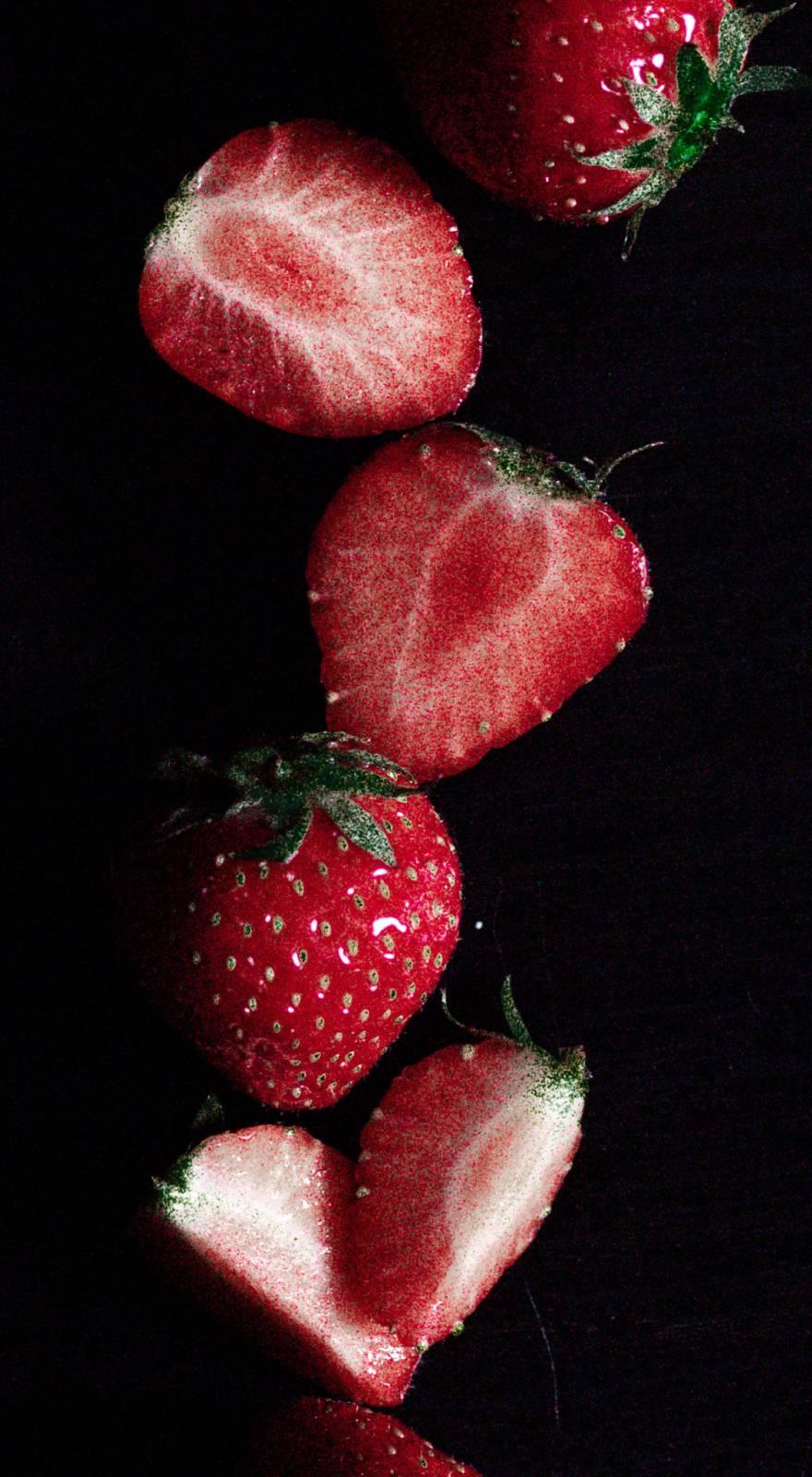Knowde Enhanced TDS
Identification & Functionality
- Ingredient Name
- Ingredients
- Oak
- Technologies
- Characteristics
Available species - French Oak
Toast - Untoasted / M / M+
Features & Benefits
- Food Ingredients Features
- Product Highlights
- OEnological Blocks
Seguin Moreau Cooperage, The Leader In Research On Wine And Wood Exchanges, Mobilizes Its Know-How, Bringing Your Creativity To Life And Personalizing Your Wines.
- THE OENOBLOCK® RANGE
Two specific toasting programs have been validated by SEGUIN MOREAU research, to maximize expression of the raw matter. Three references are available in the range:
- Untoasted: For early œnological contributions during the winemaking process
- “M” (Medium Toast): For optimum aromatic complexity, while prioritizing respect for the fruit and softness on the palate
- “M+” (Medium Plus Toast): - Use alone for specific wines and objectives - at a low dosage on white wines or on red wines designed for blending - Use in combination with M Toast to develop the wine’s aromatic style into more roasted notes (dosages > 8g/L) or in order to reinforce the intensity of ripe fruit and spicy notes (dosages from 5 to 8 g/L).
- THE BEST OF OAK
OENOBLOCK® is derived from the same oak selection and undergoes the same aging processes as the rough staves used for coopering SEGUIN MOREAU barrels:
- Haute Futaie sessile oak, for complex notes of oak accompanying the fruit and providing an increase in volume with no excessive structuring, as well as preserving balance on the palate
- Proactive maturation adapted to each oak species in order to reveal its oenological potential
- Did You Know?
Even after the wine-wood contact has been stopped, the perceived oak sensations continue to develop. Frequently a decrease in fresh wood and/or grilled roasted notes is observed. With time, vanillin is reduced to vanillic alcohol, inodorous, and a significant quantity of ellagic tannins settle. • The anisotropic characteristics of oak wood (variable permeability to liquids depending on the internal structure of the wood) partially explain the difference in oenological properties between chips, blocks, staves and barrels. It has been possible to observe that cutting staves into blocks noticeably modifies the kinetics and the nature of wood-wine exchanges.
Applications & Uses
- Markets
- Food & Nutrition Applications
- Which Wine, Which Objective?
ŒNOBLOCK® can be used from the start of red wine maceration. This specific usage should be taken into account when choosing the dosage:
Subtle Oak Impact Pronounced Oak Impact
Light red wines 25 to 42 lbs/1000 gal (50 to 58 lbs/1000 gal in maceration) 50 to 58 lbs/1000 gal (58 to 83 lbs/1000 gal)
Mature and concentrated red wines 50 to 58 lbs/1000 gal (58 lbs/1000 gal in maceration) 58 to 100 lbs/1000 gal (100 lbs/1000 gal in maceration)
- Red wines with deficient irrigation
- Concentrated press wines
42 to 50 lbs/1000 gal and 50 to 58 lbs/1000 gal in maceration of grapes in hydric stress
83 to 117 lbs/1000 gal only after alcoholic fermentation
White wines 17 to 25 lbs/1000 gal* 50 to 83 lbs/1000 gal
* Useful dosage for improving length on the palate and influencing the sensorial style of certain 4-month aging white grape varieties (Sauvignon Blanc, Verdejo, Viognier, Pinot Gris)

- Implementation
- Recommended contact time: from 1 to 4 months. The “oak uptake”* occurs earlier and for longer than in barrels or using OENOSTAVE®. It starts from the very first week and lasts between 1 and 3 months. The sensation fades progressively. The wine-wood contact must end when the wine gains a satisfactory balance. The wood’s contribution tends to decrease slightly in the weeks after contact has ended. *“Oak uptake”: A phenomenon typically observed during aging in barrels, consisting in the perception of a rather raw oak impact and a sharp increase in tannin intensity.
- Recommendations for use Red wines: Contact is possible as soon as fermentation starts. During running off, the blocks and bags must be washed with de-chlorinated drinking water and immediately put back into contact with the wine to continue maturing. The bags must be attached with a cord or cable suitable for food contact usage, in order to remove them without pumping the wine (useful on cold wines for limiting the risks of excess oxygenation). White or rosé wines: Contact is possible on clarified musts, at the start of fermentation or as soon as alcoholic fermentation ends (in this case, the vanilla impact is stronger, as is the tannic impact). During aging it is recommended to stir the wine in contact with OENOBLOCK® regularly, using the available material: pumping with inert gas or lee stirring (“batonneur” with fan blades or immersed pump). We do not recommend putting the blocks in direct contact with the pomace, which adds a risk of breaking the pumps.
Regulatory & Compliance
- Regulations
Prescribed designations: Oak wood chips.
- Regulation EC N°1507/2006 dated the 11th October 2006.
- Resolutions n°03/2005 and n°430/2010 of the œnological Codex adopted by the OIV.
- Regulation EC N°606/2009 dated the 24th July 2009, appendix 9.
- The use of oak wood chips for oenological usage is subject to regulation. SEGUIN MOREAU cannot be held responsible for improper usage of its products
Technical Details & Test Data
- Technical Characteristics
- Average dimensions of blocks
- Length = 2 inches
- Width = 1.8 inches
- Thickness = 0.7 inches
- Volume occupied by 1 bag
- OENOBLOCK® 9kg (20lbs) = 16.5L
Safety & Health
- Quality And Safety
The OENOBLOCK® range is subject to rigorous manufacturing conditions that aim to guarantee food safety and to meet current regulatory requirements. The choice of highest quality packaging materials ensures maximum protection against potential contaminations during transport or storage.
Packaging & Availability
- Packaging Type
- Packaging
Bag of 20 lb PE-ALU sachet
Storage & Handling
- Storage Conditions
This product is sensitive to odors and airborne contaminants. For best results, store in original packaging, with no ground contact and in a cool and odorless environment. Recommended shelf life: 3 years when stored in original PE-ALU packaging.

